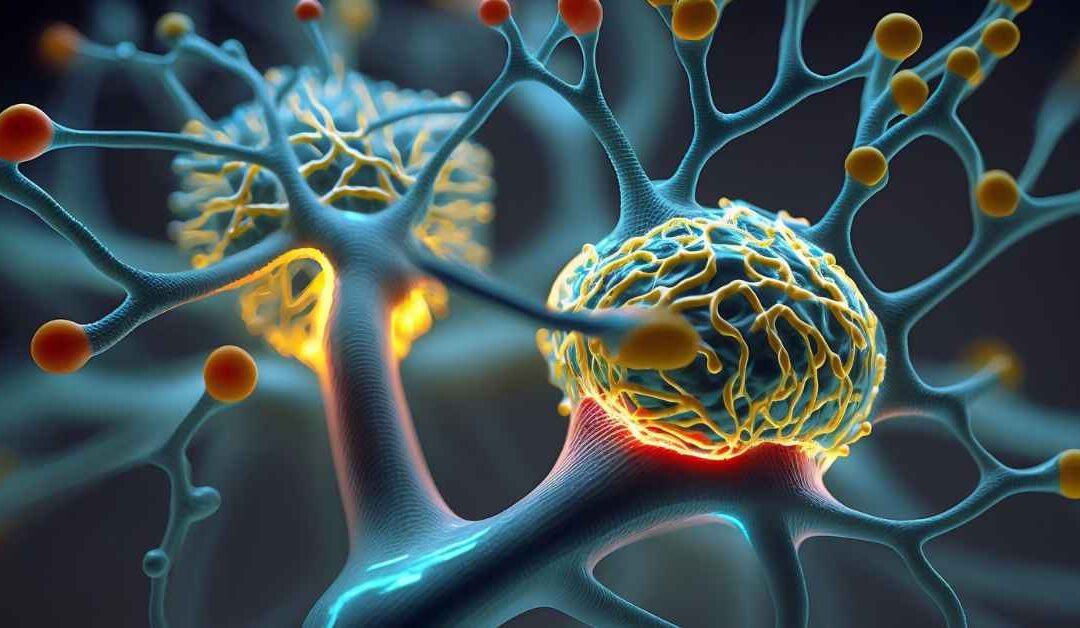In the pursuit of holistic well-being, individuals are increasingly turning to alternative therapies to find relief from stress and promote relaxation. One such practice gaining popularity is sound therapy, also known as sound healing or vibrational sound therapy. But what is sound therapy? Grounded in the principles of physics and psychology, sound therapy taps into the harmonizing qualities of sound waves to create a sense of balance and tranquility within the mind and body. In this comprehensive guide, we will delve into the science behind sound therapy and explore its potential for stress relief.
The Science of Sound and Vibrations
Sound is more than just auditory sensations; it is a physical phenomenon governed by the laws of physics. At its core, sound is produced by the vibration of objects, creating waves that travel through various mediums, including air and water. The frequency, amplitude, and resonance of these waves influence how we perceive sound. Understanding these principles helps us grasp how sound therapy can impact our well-being.
The Nature of Sound Waves
Sound waves are characterized by their frequency, which determines the pitch, and their amplitude, which defines the volume or intensity of the sound. Different frequencies resonate with various parts of the body, influencing our emotions and physical sensations.
The Physics of Resonance and Entrainment
Resonance is a phenomenon where an object vibrates at its natural frequency when exposed to external frequencies that match its own. Entrainment occurs when two vibrating systems synchronize with each other, leading to alignment and harmony. These principles are crucial in understanding how sound therapy can induce a sense of calmness and balance within the body.
Sound Healing Techniques
Sound therapy utilizes various tools and techniques to harness the healing power of sound. Here, we explore some of the most common sound healing practices and their unique contributions to stress relief.
Singing Bowls: Harmonizing Vibrations
Originating from ancient cultures like Tibet, singing bowls produce soothing tones that resonate with different chakras, promoting energetic balance and relaxation. Modern studies have shown that the rich harmonic overtones of singing bowls can induce a state of deep relaxation and reduce stress hormones in the body.
Tuning Forks: Precise Frequencies for Healing
Tuning forks are precise instruments that emit specific frequencies when struck. These frequencies can be applied to acupressure points or around the body to facilitate energetic alignment and relaxation. Scientific research has found that tuning forks can positively influence brainwave patterns and alleviate stress and anxiety.
Chanting and Mantras: Sacred Sound for Mindfulness
Chanting sacred sounds and mantras has been practiced in various spiritual traditions for centuries. These repetitive vocalizations have been shown to calm the mind, reduce negative emotions, and activate the parasympathetic nervous system, promoting relaxation.
Binaural Beats: Harmonizing Brainwave Frequencies
Binaural beats are created by playing two slightly different frequencies in each ear, leading the brain to perceive a third frequency called the “beat.” This beat corresponds to a specific brainwave frequency associated with relaxation, meditation, or sleep. Studies have demonstrated that binaural beats can induce states of relaxation and alleviate stress.
Nature Sounds and Music Therapy: A Symphony of Serenity
Experiencing natural sounds, such as flowing water or birdsong, can have a profound impact on our well-being. Music therapy, incorporating carefully crafted compositions, can also help reduce stress and promote emotional well-being. Numerous studies have shown the benefits of nature sounds and music for stress relief and relaxation.
The Mind-Body Connection in Sound Therapy
Sound therapy operates on the understanding that the mind and body are intricately connected. The vibrations produced by sound have the power to influence our physiology, impacting heart rate, blood pressure, and brain activity.
The Impact on the Nervous System
The sounds we hear can activate the autonomic nervous system, with certain frequencies eliciting a relaxation response by stimulating the parasympathetic branch. This response helps counteract the effects of the sympathetic nervous system, responsible for the “fight-or-flight” response to stress.
Neurochemical Release
Sound therapy has been linked to the release of neurotransmitters like dopamine, serotonin, and endorphins, which play a vital role in mood regulation and stress reduction. These neurochemicals contribute to the sense of well-being experienced during and after sound therapy sessions.
Sound Baths and Their Therapeutic Effects
One of the most popular forms of sound therapy is the sound bath, a meditative experience where participants lie down while immersed in the soothing sounds of various instruments. Sound baths have gained acclaim for their potential to induce profound states of relaxation and promote emotional healing.
A Journey of Sound and Healing
In a sound bath, participants embark on a journey of sound, where the vibrations of instruments like singing bowls, gongs, and chimes envelop them. As the vibrations wash over the body, tension and stress are released, leaving participants in a state of deep relaxation.
The Therapeutic Benefits of Sound Baths
Studies have demonstrated the positive effects of sound baths on stress reduction, anxiety alleviation, and improved sleep quality. The resonant frequencies from the instruments synchronize with the body, leading to a state of entrainment and enhanced well-being.
Scientific Studies and Evidence
The healing potential of sound therapy is not merely anecdotal; it is supported by a growing body of scientific research. Let’s explore some notable studies that shed light on the efficacy of sound therapy for stress relief.
Study 1: The Effects of Singing Bowl Sound Meditation on Mood and Heart Rate Variability
This controlled study investigated the impact of singing bowl sound meditation on mood and heart rate variability in participants with elevated stress levels. Results indicated a significant reduction in stress and anxiety levels after the meditation session, as well as improved heart rate variability, a marker of overall well-being.
Study 2: Binaural Beats and Stress Reduction: A Meta-Analysis
A meta-analysis of randomized controlled trials exploring the effects of binaural beats on stress and anxiety revealed consistent evidence supporting their stress-reducing effects. The analysis found a moderate to large effect size for stress reduction, making binaural beats a promising tool for stress management.
Integrating Sound Therapy into Daily Life
Incorporating sound therapy into daily routines can significantly enhance overall well-being and stress management. Here are some practical ways to integrate sound healing practices into your life.
Mindful Meditation with Sound
Combine mindfulness meditation with sound, such as using singing bowls or chanting mantras, to deepen relaxation and focus during meditation sessions.
Sound Rituals for Stress Relief
Create your own sound ritual using tuning forks or binaural beats, setting aside dedicated time each day to immerse yourself in healing vibrations.
Calming Sleep Soundscapes
Incorporate calming nature sounds or music into your bedtime routine to improve sleep quality and promote a sense of peace before slumber.
Safety and Precautions
While sound therapy is generally safe, it is essential to approach it with mindfulness and certain precautions.
Qualified Practitioners
When seeking professional sound healing services, ensure that practitioners are qualified and experienced to provide the appropriate care.
Individual Sensitivities
Be aware of individual sensitivities or medical conditions that may impact the choice of sound therapy techniques.
Personal Experiences and Testimonials
Sound therapy has touched the lives of many individuals, and their testimonials speak volumes about its effectiveness in stress relief and emotional well-being.
Emma’s Journey to Relaxation
Emma, a stressed-out executive, shares her transformative experience with sound baths and how it has become an essential part of her stress management routine.
John’s Healing Harmony
John, who struggled with chronic anxiety, recounts his journey with sound therapy and how it has empowered him to lead a more balanced and stress-free life.
Conclusion
Sound therapy offers a remarkable avenue for stress relief, leveraging the science of sound and vibrations to restore harmony within the mind and body. Drawing from physics and psychology, this alternative therapy has garnered scientific support for its effectiveness in promoting relaxation and emotional well-being. By embracing sound healing practices and integrating them into daily life, individuals can embark on a transformative journey towards greater inner peace and stress resilience. Embrace the healing power of sound, and let its therapeutic vibrations guide you on a path of holistic well-being.

Written by Jordan Buchan
Jordan is the founder of Conscious Cues. Her work is centered around the mind-body connection as it is explored through neuroscience, yoga, meditation, and other healing practices.
Does Chronic Pain Make You Tired? Understanding the Link Between Chronic Pain and Fatigue
Chronic pain doesn’t just affect your body—it drains your energy, clouds your mind, and can leave you feeling utterly exhausted. If you’ve ever wondered, “Why does chronic pain make you tired?” you’re not alone. Millions of people dealing with chronic pain also...
Inner Child Work
What Is InnerChild Work?How Does ItWork?Inner Child WorkExercisesWhat Is TheInner Child?Inner child work is a healing practice that connects you to the sensitive, innocent, and playful child within you - your inner child. It’s like opening a dialogue with this part of...

Emotional Trauma Release Exercises (TRE): 10 Somatic Exercises to Release Trauma
Emotional trauma profoundly affects our well-being, manifesting in both our minds and bodies in ways that can limit our capacity for joy and connection. Trauma Release Exercises (TRE) provide a powerful pathway out of this state, leveraging the body's natural...

Rewiring Your Brain: Neuroplasticity Exercises for Habit Change
Unleash the Potential of the Brain: Neuroplasticity In Action Understanding the Brain as a Tool In the vast landscape of human potential, our brain stands as a remarkable tool that holds immense power to shape our lives. It serves as the command center, processing...

Gut-Brain Connection 101: Debunking Myths, Unveiling Hidden Links, and Preventing Misdiagnoses
The gut-brain connection is not just fascinating; it's a fundamental aspect of our health that influences everything from our mood to how we digest food. In this comprehensive resource, we will explore the intricate relationship between our gut and brain,...

Exploring Ecstatic Dance: The Science of Movement, Frequencies, and Sound Healing
Ecstatic Dance, an emerging movement practice, is gaining popularity worldwide for its unique approach to self-expression and healing. Rooted in ancient traditions and modern dance forms, Ecstatic Dance is a liberating and transformative experience that invites...

The Power of the Present Moment: Embracing Mindfulness for Freedom from Suffering
In our fast-paced world, finding a moment of stillness and being fully present can seem like a rare luxury. However, the concept of mindfulness, deeply rooted in various cultures and spiritual traditions, invites us to discover the immense power that resides in the...

Trauma Release Therapy (TRT): Releasing Stored Tension Through Trauma Release Exercises (TRE)
Trauma, with its lasting imprints on the mind and body, profoundly impacts emotional, psychological, and physical well-being. Trauma release therapy is an approach that acknowledges the connection between trauma and the body's physiological responses. This...

The Power of Somatics: Unraveling the Missing Piece in Trauma Healing
In the realm of trauma healing, a powerful approach has emerged, offering a fresh perspective on addressing the enduring effects of traumatic experiences. Somatics, a field that explores the mind-body connection, explores how trauma is stored in the body and how...

The Field Is the Only Reality: Exploring Quantum Physics and Spirituality
What Is the Field and Why Is It Considered the Only Reality? In the fascinating realm of quantum physics, scientists have uncovered mind-boggling phenomena that challenge our conventional understanding of reality. At the core of these discoveries lies the concept that...

